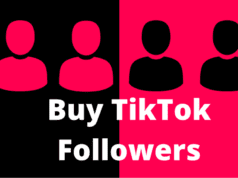
by Jennifer Shaheen for SCORE
If you’re having a hard time keeping up with all of the new advertising tools, algorithm changes and other marketing news coming from Google, you’re not alone. Google exists in a state of constant evolution, trying new initiatives while being unafraid to phase out platforms and products that didn’t work out exactly as planned.
For a small business owner, this can make making sensible advertising decisions difficult: if you don’t know what all of your options are, or what Google’s offerings are likely to be six months to a year from now, things get tricky.
Here are tips on the latest Google advertising products for your small business:
A Need for Speed: Google Introduces Tools for Rapid-Loading Mobile Ads
Mobile ads can take up to 19 seconds to load, while customers’ willingness to wait for ad content maxes out at less than 2 seconds. This led to the wide-spread adoption of ad blockers, which has a direct negative impact on Google’s bottom line. To counter this, Google introduced AMP for Ads, a suite of guidelines and best practices advertisers can follow to create fast-loading mobile ads. This is very similar to Google AMP, which was put in place to help web developers create website pages that would load quickly on smartphones and tablets. AMP for Ads is open-source, meaning this information is freely available for anyone who wants to use it. If you create your own ad content, you’ll definitely want to familiarize yourself with it, and if you work with an agency, it’s a good idea to make sure they’re creating new mobile ads that are compliant with the AMP for Ads standards.
Bridging The Gap Between Online Interest & In Store Purchases
For small business owners with a physical business location, Google has introduced a suite of products to bridge the gap between online interest and in-store purchasing. GE Capital Retail Bank’s research team found that 81% of shoppers do research online in advance of visiting a store for a major purchase; even minor shopping excursions are pre-vetted with searches aimed at discovering store locations, hours of operation, product offerings and more.
The Google Knowledge Panel, including Google Maps, has been serving small business owners with basic ads that show a photo of the business, a Google Map street view of the location, with directions available, as well as other pertinent information. What’s exciting is the new Local Inventory Ads feature, which allows shoppers to click a link and view a selection of your actual inventory. You have the option to make the items available for immediate purchase through Google, or to let your customer know the item is available in the store right now. Order online/pickup in-store functionality is also available and is proving to be quite popular with small business owners. This is important to know because local-searches account for up to a third of all mobile searches.
Bigger, Better Text Ads
To the delight of writers everywhere, Google has more than doubled the character limit for text ads. Previously, advertisers were limited to a single 25 character headline. Now it’s possible to have two headlines of 30 characters each. This change applies to text ads on desktop computers as well as mobile devices. Having more room to describe your offer’s appeal consistently results in a higher click-through rate, potentially generating higher sales.
You Can’t Put Google on AutoPilot
Busy small business owners sometimes hit on an ad that works and want to keep using that same ad over and over again. While that may work on some platforms, it’s important to understand that’s not the right choice for your Google advertising. The frequent changes to the platform create a need to continually adjust imagery, copy, posting times, target audience and other factors. This creates a steady stream of fresh content for users in alignment with Google’s ultimate goal of improving the user experience. That being said, make sure to check your metrics to discover which ads are working best in the current environment, so you can make the most of them before Google changes everything again.
Stay Informed
Google does have a few official channels to disseminate news and changes to the public, including their official blog, a YouTube channel and my personal favorite “Think with Google.” They also feature specific information for their advertisers on the AdWords blog. Additionally, sites like Moz and, of course, SCORE do their best to keep users appraised of current and coming changes. Read this content regularly – our team does so weekly, if not even more frequently – and use what you learn to craft marketing plans that make the most of available Google advertising tools.








